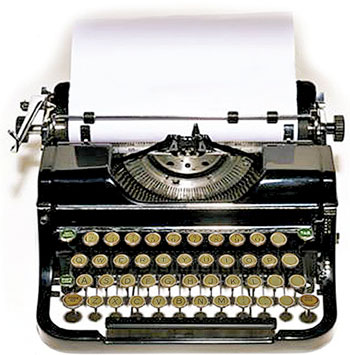The origin of the typewriter
While the earliest recorded history of someone proposing a
typewriter-like device goes back to the early 1700s, the first known
working manual typewriter was developed in Italy a century later.
Inventor Pellegrino Turri built a machine for a blind friend, according
to history scholars at Xavier University. In 1870, a Danish pastor and
inventor named Rasmus Malling-Hansen patented the first commercially
produced typewriter called a “writing ball,” which had the keys
protruding from a round surface, under which paper would be placed.
However, the model that accelerated the typewriter's popularity was the
one built by Sholes and Glidden, starting in 1873.
Early innovations

While the Sholes and Glidden model introduced the QWERTY keyboard,
which is still used predominantly today on typewriters and computer
keyboards, other brands were developing their own distinct models. The
Caligraph, for example, had separate keys for upper-case and lower-case
letters.
The Daugherty and Underwood models that emerged at the very end of
the 19th century created the basic look that would last for decades.
This included a QWERTY keyboard with keys that would strike the front of
the platen (typing surface), as opposed to the back of the platen as in
the early models, as well as the use of a ribbon and four rows or banks
of keys.
The 1960s
Manual typewriters started to give way to electric typewriters in the
1960s, when companies such as Brother started capitalising on
innovations that were placing electronics throughout the office setting.
Manual typewriters continue to increase in value as antiques,
representing nearly a century of innovations as the most sophisticated
and technologically advanced way to present the written word.
-Internet |

